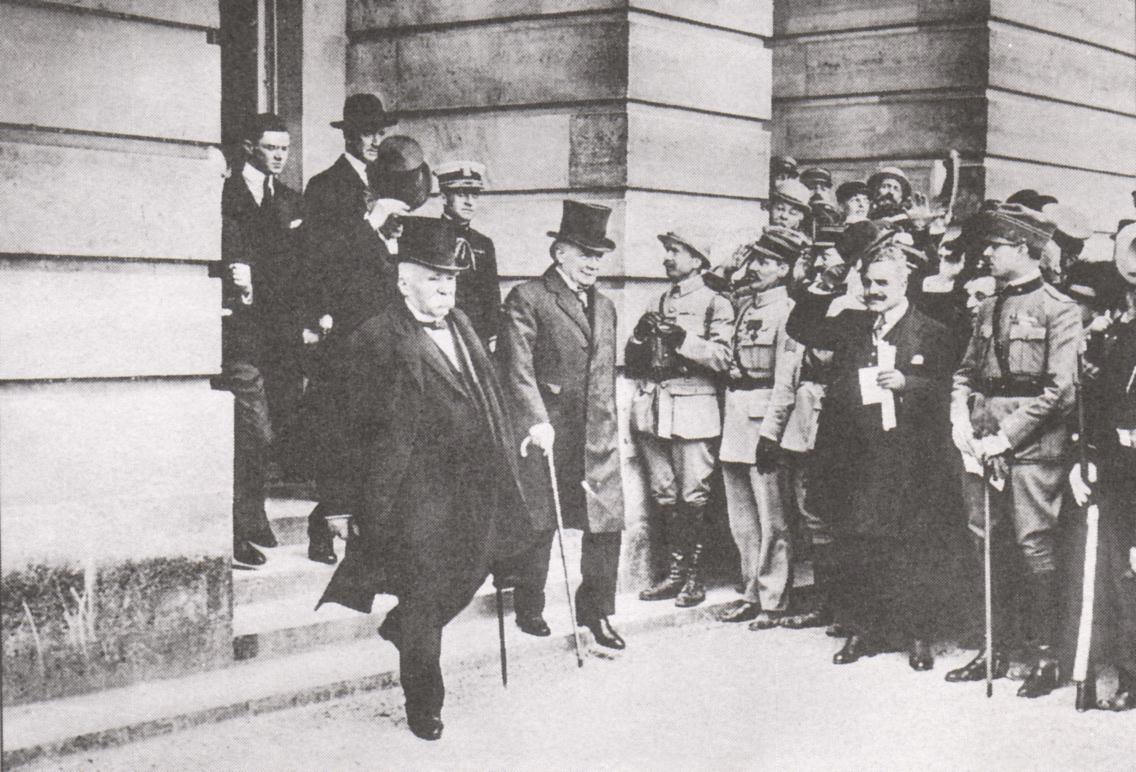 |
|
The Treaty of Versailles was the peace settlement signed after World War One
had ended in 1919 and in the shadow of the Russian Revolution and other events
in Russia. The treaty was signed at the vast Versailles Palace near Paris hence its title - between Germany and the Allies.
The three most important politicians there were David Lloyd George, Georges Clemenceau and President Woodrow Wilson. Although
the armistice signed on November 11, 1918 put an end to the actual fighting, it took six months of negotiations at the Paris
Peace Conference to conclude a peace treaty. Of the many provisions in the treaty, one of the most important and controversial
provisions required Germany and her allies to accept full responsibility for causing the war and, under the terms of articles
231-248, disarm, make substantial territorial concessions and pay reparations to certain countries that had formed the Entente
powers.

|
| George Clemenceau and Lloyd George leave the Trianon Palace Hotel at Versailles during the Paris Pea |
|
 |
|
|
 |
 |
|
 |
 |
|
Picture Of The Treaty

Negotiations between the Allied powers started on January 18 in the Salle de l'Horloge at the French Foreign Ministry,
commonly known by its location, the Quai d'Orsay. Initially, 70 delegates of 26 nations participated in the negotiations.
Having been defeated, Germany, Austria, and Hungary were excluded from the negotiations. Russia was also excluded because
it had negotiated a separate peace with Germany in 1917, in which Germany gained a large fraction of Russia's land and resources.
Until March 1919, the most important role for negotiating the extremely complex and difficult terms of the peace fell to the
regular meetings of the "Council of Ten" head of government and foreign minister composed of the five major victors (the United
States, France, Great Britain, Italy, and Japan.
|
 |
|
|
|